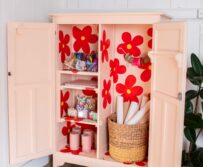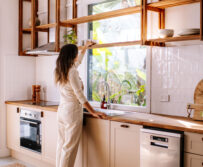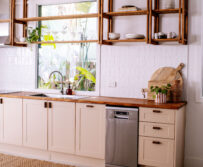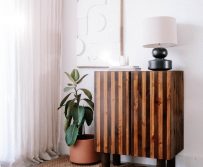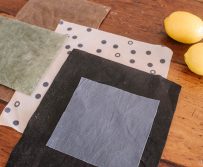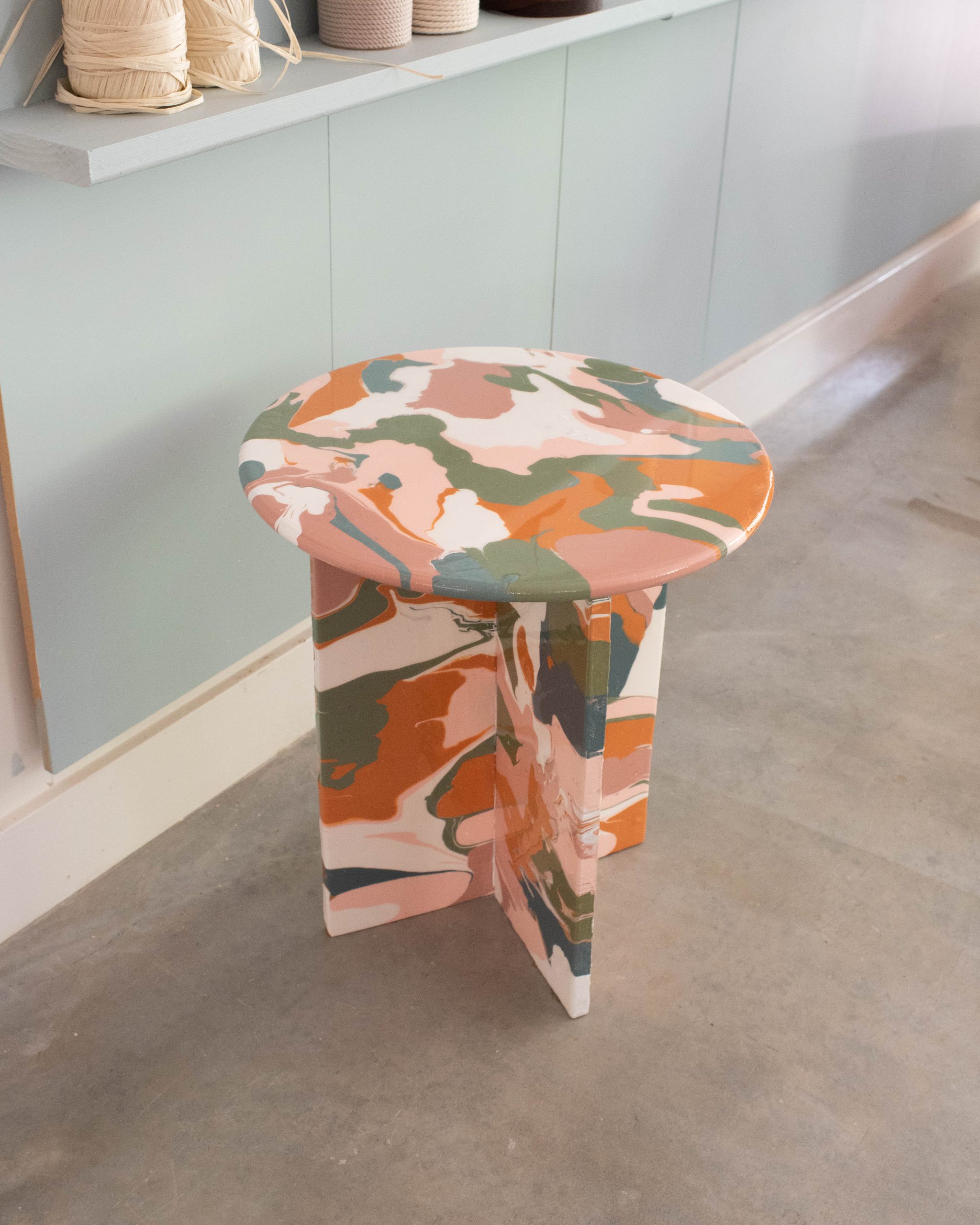Here’s a really fun (and satisfying) project to try using any left over paint samples you may have laying around!
The other day I was organising my paint cabinet and pulled out a bunch of half empty paint samples (I have a habit of keeping my paint pot samples regardless of how much paint is actually left) There wasn’t quite enough in each to use for separate projects, and instead of just throwing them out, I decided to use them as a part of my third #foundthenflipped project, this upcycled acrylic pour painted side table!
- Before
What is acrylic pouring?
If you’ve never heard of acrylic pouring, it’s essentially exactly what it sounds like. The process in which the acrylic paint is poured into each other or tilted onto the canvas (in this case a piece of furniture) and disseminated by tilting the painting surface. This technique creates a really unique design element, almost giving the piece a marbled effect. I’ve been dying to try this method and I figured it was a great solution to my half used paint sample situation lol.
I knew in order to get the look I wanted, I needed to find a piece of furniture with multiple flat surfaces. So when I came across this geometric side table at the op shop, I knew it needed to come home with me!
Materials You’ll Need to make an upcycled pour painted side table
- Side Table (I found this one at the thrift store for $5 and replaced the legs because they weren’t very sturdy)
- British Paints 250ml White Sample Pot
- Drop Cloth
- Wooden panel (this is only needed if you’d like to replace the legs like I did)
- Feast Watson 1m² Glass Finish
- Stir Sticks
- Gloves
- Safety Glasses
- Mask
- Liquid Nails (if you’re replacing the legs)
How to make an upcycled acrylic pour painted side table
1
I began by unscrewing the legs and using a rubber mallet to remove the pieces of wood which were glued on. I decided to remove the legs because they weren't in great condition and I also thought that the poured paint effect on all surfaces would look the best!
2
After dismantling the side table, I prepared my work space. I knew this project was going to be messy so I chose to use an old drop cloth to cover my work table in the studio. In retrospect I should have done this outside on concrete as the resin did seep through the drop cloth and ended up ripping up a layer of paint on my work table. Ah well, you live and you learn I guess!
3
Placing the table top onto the drop cloth, I then began the pouring process! I found the best technique was to pour the colours on top of each other and then titling the piece so they would run over the rest of the table. This is a bit of an experimenting step, I would pour a little more of certain colours in certain places if I felt like it needed it. Just take it slow during this part, I found it to be a very therapeutic process!
4
The best way to finish off the edges, I found to be was to place the table top onto a paint can and pour a bit of paint in the spots that needed to be filled. Your drop cloth will get very messy, but that's half the joy of this project!
5
Using a jigsaw, cut the wooden plank into 2 smaller pieces of wood to be the T shaped legs (measure your table top and cut the pieces accordingly). Then repeat the pouring process on these pieces (you'll have to let the first side dry before doing the back side).
6
One thing I forgot to mention at the start is that this project takes time. If you want a really good outcome, it'll require a lot of patience! You'll need to let this coat of poured paint dry for at least 24 hours, it may even need a solid 72 hours to dry before doing the other sides.
7
Once you've completed both sides and all the pieces are completely dry, it's time to apply the resin. The application process may differ depending on what kind you use, so I'd suggest just very carefully following the instructions on the label of your chosen resin. It's also super important to wear PPE for this - gloves, mask and goggles and do it in a well ventilated space. As I mentioned before, the kind I used seeped through my drop cloth and stuck the drop cloth to make work table so I had to get Ben's help to rip it off.
I’m so happy with the way this turned out and I’d definitely like to try it again with some other projects in the future! I feel like this idea with a bunch of different hues in the same colour could be really cool!
The project is in collaboration with Bunnings.
